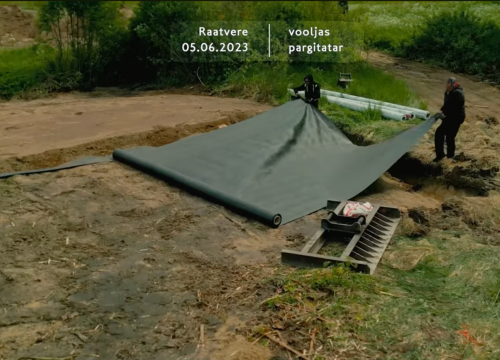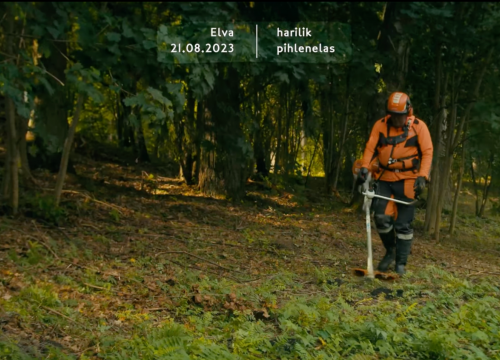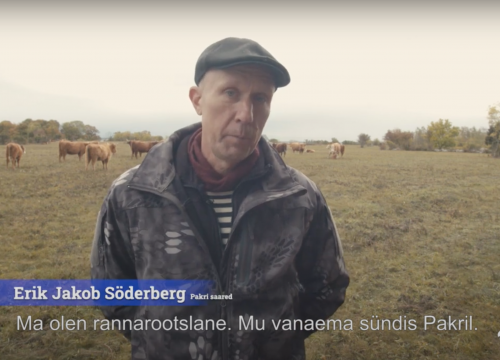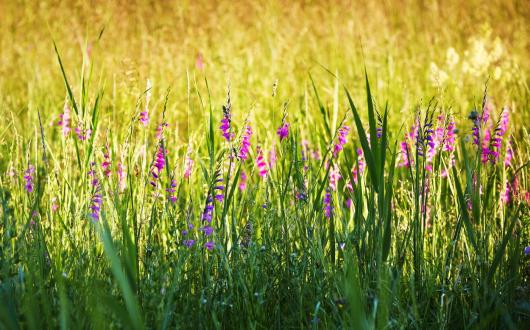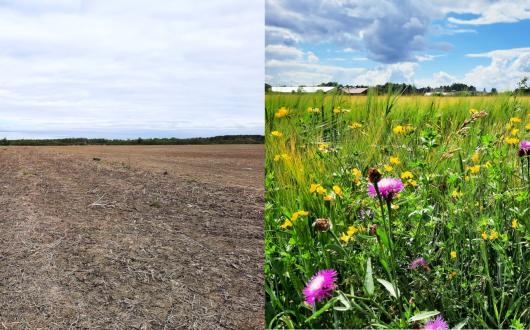LiFE IP ForEst&FarmLand
In 2020 LIFE IP project ForEst&FarmLand (“Comprehensive management of forest and farming landscapes to improve the conservation status of Natura 2000 habitats and species”) was launched, involving all key players from universities, forestry sector and nature conservation as well as NGOs to jointly protect and restore Estonian landscapes and ecosystems and to improve the condition of the species and habitats in Estonian forests and agricultural lands.
The project (2020-2029) is led by the Ministry of the Environment and the total cost of the project is € 19,561,784.
LIFE-IP project “ForEst&FarmLand” tests the control of four large plants – goldenrods, knotweeds, common snowberry, and false spiraea – using different control methods. All of these species have escaped the garden over time and are now crowding out the local flora in the wild. More information can be found: www.loodusrikaseesti.ee/en/regulation-alien-species.
LIFE-IP project “ForEst&FarmLand” tests the control of four large plants – goldenrods, knotweeds, common snowberry, and false spiraea – using different control methods. All of these species have escaped the garden over time and are now crowding out the local flora in the wild. More information can be found: www.loodusrikaseesti.ee/en/regulation-alien-species.
LIFE-IP project “ForEst&FarmLand” tests the control of four large plants – goldenrods, knotweeds, common snowberry, and false spiraea – using different control methods. All of these species have escaped the garden over time and are now crowding out the local flora in the wild. More information can be found: www.loodusrikaseesti.ee/en/regulation-alien-species.
LIFE-IP project “ForEst&FarmLand” tests the control of four large plants – goldenrods, knotweeds, common snowberry, and false spiraea – using different control methods. All of these species have escaped the garden over time and are now crowding out the local flora in the wild. More information can be found: www.loodusrikaseesti.ee/en/regulation-alien-species.
In order to start using the already overgrown alvars as pastures again, it is necessary first to thin out the junipers there and make space for animals to move. This is a laborious undertaking that the Estonian Fund for Nature does over and over again with the help of volunteers. For five consecutive summers, this has also been supported by the LIFE-IP project ForEst&FarmLand, which is why the Estonian Fund for Nature has had the chance to work also in a relatively remote area – the Kesselaiu alvar.
On 17 February 2022, we had an award ceremony to thank outstanding managers of semi-natural meadows, those who have made a great contribution to the preserve and restore semi-natural habitats of Estonia. Among the nominees was Erik Jakob Söderberg from Pakri Island, who tells his story in English.
The story of Erik Jakob Söderberg’s return to the island where his grandmother was born speaks for itself! Together with his friend, Urmas Sepp, and a herd of 300–400 cattles, Erik takes care of the most compact and largest alvar in Estonia, located on the Pakri Islands. A total of 1098 hectares of land is being restored and maintained.
News
Estonian grassland managers’ voices are now heard worldwide!
A research article based on a nationwide survey explored how managers of Estonian semi-natural grasslands assess current conditions and support schemes, and what could be improved in the future to ensure the continued provision of ecosystem services and the preservation of cultural heritage.
Nature helps a farmer when a farmer helps nature
Krista Takkis, Katrin Tambet, Tartu ülikool
Agriculture is a lifestyle based largely on experimentation. Which crops, varieties and animal breeds should be grown? Which technologies should be used? Which fertilizers and plant protection products? There are thousands of questions. Among them, there is one that may have received undeservedly little attention: How can nature help me in my work?
